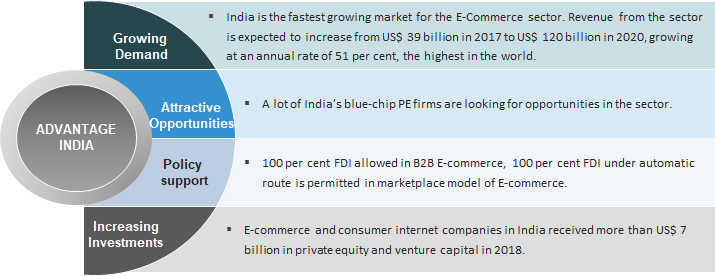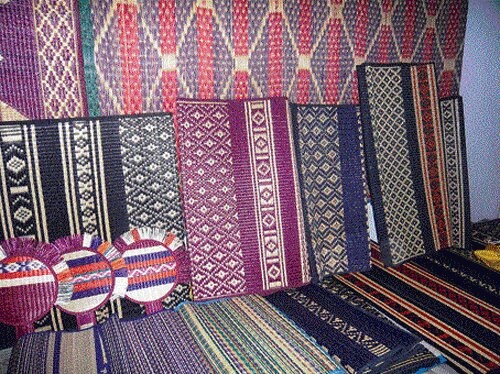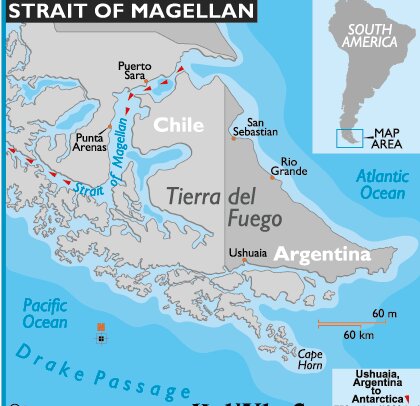Biodiversity & Environment
Integration of Land and Water Schemes to Tackle Land Degradation
As about 30% of India’s land is degraded, the Government of India wants to converge various land and water schemes to mainstream land degradation issues in national programmes.
- India aims to be land degradation-neutral by 2030, where any increases in land degradation are balanced by equivalent gains in land reclamation to ensure no additional net loss of land-based natural capital.
- While budgets available for all land- and water-related schemes in Centre and States are enough to solve the problem, there is a need to bring convergence to utilise these resources better.
- The 14th session of the Conference of the Parties (COP 14) to the UNCCD will be held from September 2-13 in New Delhi where Governments are expected to agree on strategic and effective land use and sustainable land management goals.
Background
- The TERI report titled ‘Economics of Desertification, Land Degradation and Drought in India’ stated that while loss of productive land for various ecosystems is a concern, a larger concern is the degradation of existing ecosystems.
- The annual economic costs of land degradation and land use change in the country have been estimated at ₹3,17,739 crore, which is 2.54 per cent of India’s GDP in 2014-15 and about 15.9 per cent of the GVA from agriculture, forestry and fishing sectors.
- Almost 82 per cent of the estimated cost is on account of land degradation and only 18 per cent due to land use change.The land area that is likely to be degraded in 2030 under these two different scenarios is projected at 94.53 mha and 106.15 mha.
- The area affected by water erosion and area under open forests (as compared with moderately dense and very dense forests) is projected to rise in both scenarios, suggesting that India will need to strengthen reclamation efforts in these sectors.
Classification of Forest Cover
- The forest cover is broadly classified into 4 classes, namely very dense forest, moderately dense forest, open forest and mangrove.
- Mangroves have been separately classified because of their characteristic tone and texture and unique ecological functions.
- The other classes include scrub and non-forest. These classes are defined is below.
| Very dense Forest | All Lands with tree cover (Including mangrove cover) of canopy density of 70% and above | |
| Mod Dense forest |
All lands with tree cover (Including mangrove cover) of canopy density between 40% and 70% above |
|
| Open forest | All lands with tree cover (Including mangrove cover) of canopy density between 10% and 40% | |
| Scrub | All forest lands with poor tree growth mainly of small or stunted trees having canopy density less than 10 percent | |
| Non Forest | Any area not included in the above classes |
Causes of Land Degradation
- Population Pressure
- Climate Change
- Soil Pollution
- Land use change
- Deforestation
- Poor farming practices
- Overgrazing
- Over irrigation
- Urban sprawl
Government Efforts to Check Land Degradation
- India is focusing on sustainable land and resource management for livelihood generation at community level for making the local lands healthier and productive for providing a better homeland and a better future for its inhabitants.
- The National Action Programme for combating desertification was prepared in 2001 to take appropriate action in addressing the problems of desertification.
- Some of the major programmes which address issues related to land degradation and desertification, being implemented currently are as follows:
- Integrated Watershed Management Programme (IWMP),
- National Afforestation Programme (NAP),
- National Mission for Green India (GIM),
- The Mahatma Gandhi National Rural Employment Guarantee Scheme (MGNREGS),
- Soil Conservation in the Catchment of River Valley Project
- National Watershed Development Project for Rainfed Areas (NWDPRA),
- Fodder and Feed Development Scheme-component of Grassland Development including Grass Reserves,
- Command Area Development and Water Management (CADWM) programme,
- Soil Health Card Scheme etc.
- Apart from this numerous outreach programmes and awareness activities have also been conducted across the country.
- Desertification and Land Degradation Atlas of India released in 2016, compares status of 2003-05 and 2011-2013 and provides baseline data for prioritizing action based on vulnerability and risk assessment.
Indian Polity
The Muslim Women (Protection of Rights on Marriage) Act 2019
The Muslim Women (Protection of Rights on Marriage) Bill 2019 after receiving Presidents nod became an Act.
- The Muslim Women (Protection of Rights on Marriage) Act, 2019 has replaced an Ordinance promulgated on triple talaq.
Key Provisions
- Declaration of Talaq: The Act makes all declaration of talaq, including in written or electronic form, to be void (i.e. not enforceable in law) and illegal.
- The Act defines talaq as talaq-e-biddat or any other similar form of talaq pronounced by a muslim man resulting in instant and irrevocable divorce.
- Offence and Penalty: The Act makes a declaration of talaq a cognizable offence, attracting up to three years imprisonment with a fine.
- A cognizable offence is one for which a police officer may arrest an accused person without warrant.
- Cognizable Offence: The offence will be cognizable only if information relating to the offence is given by married woman (against whom talaq has been declared), or any person related to her by blood or marriage.
- Bail: The Act provides that the Magistrate may grant bail to the accused.
- The bail may be granted only after hearing the woman (against whom talaq has been pronounced), and if the Magistrate is satisfied that there are reasonable grounds for granting bail.
- Compounding Offence: The offence may be compounded (i.e. the parties may arrive at a compromise) by the Magistrate upon the request of the woman (against whom talaq has been declared).
- The terms and conditions of the compounding of the offence will be determined by the Magistrate.
- Allowance: A Muslim woman against whom talaq has been declared, is entitled to seek subsistence allowance from her husband for herself and for her dependent children.
- The amount of the allowance will be determined by the Magistrate.
- Custody: A Muslim woman against whom such talaq has been declared, is entitled to seek custody of her minor children.
- The manner of custody will be determined by the Magistrate.
Governance
J&K and 15th Finance Commission
With the change in status of Jammu & Kashmir’s statehood, the Fifteenth Finance Commission will have to rework its calculations for inter se distribution of central resources among different states.
- The state of J&K is proposed to be organized into two Union Territories – Jammu & Kashmir (with Legislative Assembly) and Ladakh (without Legislative Assembly).
- Instead of 29 states, the Finance Commission (FC) would have to decide devolution for 28 states now.
- Funds for Union territories (including Delhi, Puducherry, etc) are decided by the Central government in the Union Budget and voted by the Parliament.
- Jammu and Kashmir was one of the few states that was accorded a special category status (SCS) by the Central government.
- Almost 30% of the total central assistance was earmarked for these states. Further, they used to get favourable treatment in terms of the grant versus loan mix compared with other states.
- Following the constitution of the NITI Aayog and the recommendations of the 14th Finance Commission (FFC), central plan assistance to SCS States has been subsumed in an increased devolution of the divisible pool to all States from 32% to 42%.
- Of the states’ share, the 14th FC recommended that Jammu and Kashmir should receive 1.854% from 2015-16 till 2019-20. This is higher than 1.551 % that the state received during the previous five years.
Finance Commission
- The Finance Commission is a constitutional body, that determines the method and formula for distributing the tax proceeds between the Centre and states, and among the states as per the constitutional arrangement and present requirements.
- Under Article 280 of the Constitution, the President of India is required to constitute a Finance Commission at an interval of five years or earlier.
- The 15th Finance Commission was constituted by the President of India in November 2017, under the chairmanship of NK Singh. This Commission is expected to submit its report by November end 2019. Its recommendations will cover a period of five years from April 2020 to March 2025.
Indian Polity
Draft E-Commerce Norms- 2019
Ministry of Consumer Affairs has released the draft guidelines on e-commerce for consumer protection.
- The e-Commerce guidelines for Consumer Protection, 2019 will be applicable on all business-to-consumer (B2C) e-commerce platforms.
- E-Commerce norms will act as the guiding principles for e-commerce business for preventing fraud, unfair trade practices and protecting the legitimate rights and interests of consumers.
- The key areas that have been covered in the rules include preventing price influencing, addressing counterfeit, improving integrity of reviews as well as increasing transparency of terms e-commerce have with sellers and disclosure of seller information.
Key Guidelines
- Compulsory Return Policy: It is mandatory for e-commerce entities to accept returns in the event the products delivered are defective, wrong or spurious or if they do not have the characteristics or features advertised.
- Seller Details: E-commerce companies will also have to display details about the sellers on their website, especially the type of business furnished by the seller entity.
- Transparent Contract: The draft guidelines propose to increase transparency in contracts signed between e-commerce entities and the sellers, directing them to display terms of their contracts relating to aspects like return, refund, exchange, warranties and guarantees, delivery and shipment, mode of payments and redressing grievances.
- Grievance Redressal: The draft has also sought transparency on the procedure followed to address complaints, directing e-commerce companies to publish contact details of their grievance officers on their websites and setting a one-month timeline for them to redress issues from the time the complaint is registered.
- Fair Pricing Policy: E-commerce platforms will not be allowed to directly or indirectly influence the price of the products and services they offer.
- Unfair Trade Practice: E-commerce platforms cannot adopt any trade practice for the purpose of promoting the sale, use or supply of any goods or services or use unfair and deceptive methods and practices that may influence the consumer’s transactional decisions.
- False Reviews: Guidelines aim to restrict sellers from falsely representing themselves as consumers or posting reviews as well as misrepresenting and exaggerating the quality and features of products on their sites.
Indian E-commerce Market
- According to Morgan Stanley report- 2019, India is adding one Internet user every three seconds.

- The e-commerce sector in India is estimated to reach USD 230 billion by 2028 (accounting for 10% of India’s retail).
- The e-commerce sector in India has been witnessing an explosive growth fuelled by the increase in the number of online users, growing penetration of smartphones and the rising popularity of social media platforms.
- The Indian e-commerce industry is expected to surpass the US to become the second largest e-commerce market in the world by 2034.
- Online shoppers in India are expected to reach 120 million in 2018 and eventually 220 million by 2025.
Indian Heritage & Culture
Pathamadai Silk Mat
Inclusion of technology in the making of traditional Pathamadai silk mat through the use of electronic powerloom is ensuring higher production and income for weaving community.
- Handmade Pathamadai silk mats are also called Pattu paai.

- Traditional art of weaving pathamadai silk mat belongs to the Tirunelveli district of Tamil Nadu.
- Pathamadai mat is made up of Korai grass.
- Pathamadai mats have been granted Geographical Indication (GI) status by the trademarks and GI authorities.
- These are made specially for wedding ceremonies and have bride’s and groom's names as well as the wedding date woven in it.
Concerns
- Outdated handicraft methods used in the making of Pattamadai mats is facing tough competition from increased domestic and international demand and supply imbalance which has led to increased use of synthetic dyes and lesser focus on benefits for the weaver.
- Low cost and mechanisation of plastic mats are resulting in the decline of the silk mat industry.
Initiatives/Schemes to Promote Technology in Textile Production
- Sustainable and Accelerated Adoption of efficient Textile technologies to Help Small Industries (SAATHI) Initiative: Under this initiative, Energy Efficiency Services Limited (EESL), will acquire energy efficient powerlooms, motors and rapier kits in bulk and provide them to the small and medium powerloom units.
- Power Tex India: It is a comprehensive scheme for powerloom sector development.
- Merchandise Exports from India Scheme (MEIS): It is aimed at stimulating the growth of textile exports from India in various traditional and emerging markets.
- Textile sector is one of the biggest beneficiaries of the MEIS.
- Amended Technology Upgradation Fund Scheme for textiles industry (ATUFS): It is designed to provide incentives to entrepreneurs and business owners for upgrading technologies.
- Integrated Skill Development Scheme (ISDS): Textile weavers and workers lack formal training in using the latest technology which reduces their chance to get a better job and higher wages.
- ISDS plans to bridge this skill gap by training 1.5 million people.
- Scheme for Integrated Textile Parks (SITP): Under SITP scheme, the government will provide funding for infrastructure, buildings for common facilities like design & training centre, warehouse, factories and plant & machinery.
Important Facts For Prelims
Article 371
While Article 370, which limited purchase and inheritance of property to permanent residents, was scrapped for J&K, similar provisions are also provided under Article 371 in many states.
- Article 371A prohibits anyone who is not a resident from buying land in Nagaland, which may only be bought by tribals who are residents of the state.
- Article 371F bestows on Sikkim government the right of ownership of all land in the state, even if it was owned by private individuals prior to the state’s merger with India.
- The same Constitutional provision mandates a four-year term for the Sikkim state assembly, though assembly elections in the state have violated that clause as they have been held every 5 years.
- Moreover, Article 371F states that “neither the Supreme Court nor any other court shall have jurisdiction in respect of any dispute or other matter arising out of any treaty, agreement, engagement or other similar instrument relating to Sikkim”,however, a specific condition allows the President to step in if the need arises related to constitutional law.
- Article 371G is similar to Article 371A, as it limits the ownership of land to Mizoram’s tribals except for setting up of industries by the private sector, land can now be acquired by the state government as per the provisions of Mizoram (Land Acquisition, Rehabilitation and Resettlement) Act, 2016.
- Both Article 371A and Article 371G limit the Parliament’s authority to enact any law that interferes with tribal religious laws, customs, including their justice system.
- Moreover, under Article 371 non-residents are still not allowed to buy agriculture land in Himachal Pradesh.
Important Facts For Prelims
Strait of Magellan
- The Strait of Magellan is located near southern Chile along the southern edges of the South American continent and links the Atlantic and Pacific oceans.
- It is named after the Portuguese adventurer, Ferdinand Magellan, the first explorer to circumnavigate the globe.
- Sheltered by mainland South America and the islands of Tierra Del Fuego archipelago, this route was considered much safer than the Drake Passage, a more violent stretch of chaotic water between Antarctica and South America.
- Located on the Strait of Magellan, Chile's port city, Punta Arenas was once one of the most important supply stops for mariners, until the Panama Canal opened in 1914.
Ferdinand Magellan
- He set off from Spain 500 years ago on an audacious voyage to sail all the way around the globe for the first time, a landmark in the history of exploration.
- While crossing the strait, the explorer and his crew observed two galaxies visible to the naked eye from the southern hemisphere, now known as the Magellanic Clouds.
- The voyage also contributed to Europeans’ knowledge of the universe.
Magellanic Clouds
- They are comprised of two irregular galaxies, the Large Magellanic Cloud (LMC) and the Small Magellanic Cloud (SMC), which orbit the Milky Way once every 1,500 million years and each other once every 900 million years.
- Lying only about 200,000 light years away, they were the closest known galaxies to the Milky Way until recently, when the Sagittarius and Canis Major dwarf galaxies were discovered and found to be even closer.
- Although very close to us, the Magellanic Clouds have played a significant role in our understanding of the distant Universe.





